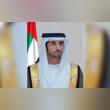
- ID Number 24666
- Aug 08, 2023
- 202
The Airport Show 2014 team members from Reed Exhibitions Middle East expressing happiness and satisfaction following the success of the three-day B2B event at the Dubai International Convention and Exhibition Centre (DICEC). The show, which had the Globa
The challenges faced in the adoption of Open Skies in the Middle East region and the socio-economic benefits of the aviation policy has been debated by key aviation industry experts on the concluding day of the 2nd Global Airport Leaders Forum (GALF) - the colocated event of 14th Airport Show- at the Dubai International Convention and Exhibition Centre (DICEC) on Tuesday.
Titled Expanding Civil Aviations reach through Open Skies, the session panelists included Jamal Al Hai, Executive Senior Vice President, Dubai Airports, Michael Herrero, Gulf Area Manager, International Air Transport Association (IATA), Dr. Hamdi Chaouk, Director General, Civil Aviation Authority of Lebanon, Bader Almershed, Vice President, Jazeera Airways, Ibrahim Khayat, President, International Centre for Strategic Analysis. Duncan Alexander, Director of West Asia, Pacific Asia Travel Association (PATA), moderated the session which drew participants from the regional aviation industry, including airports and airlines.
In his keynote address, Jamal Al Hai, Executive Senior Vice-President for International Affairs & Corporate Communications Dubai Airports, and former member of UAEs Federal National Council (FNC), said Open Skies, pioneered by Dubai way back in 1930s and adopted globally since then, has been helping towards the growth of the aviation industry.
He remarked: The seed of the civil aviation that was sown in the middle of the vast Arab desert at a time when the means of livelihood and infrastructure minimalist has blossomed into a huge tree with its roots not only gaining solid grounds but providing opportunities for other sectors to flourish alongside.
He said Open Skies has remained the frontline of our winning strategy for the civil aviation development in the UAE, alongside massive investments in airports and airspace management, expansion of air connectivity for the movement of both human and trade across the world. He said aviation liberalization has remained the biggest challenge impacting the growth of airports in view of the high volume of passengers and aircraft movements.
The UAE has signed more than 160 Air Services Agreements (ASAs), of which majority are Open Skies arrangements. Open Skies have provided for us the basis for expanding market access and route connectivity between states for mutual benefits. We remained strongly committed to Open Skies and air transport liberalization given their proven and visible vast socio-economic benefits in the region - and even in other parts of the world, he said.
He said Dubais passenger and cargo aircraft movements are projected to reach 416650 and 35,000, respectively, in 2015. Aviations share in Dubais GDP is projected to reach 32 per cent in 2020. It has been estimated that $82 billion have been invested in aviation infrastructure development in the Emirate of Dubai alone since the formation of the UAE in 1971.
He disclosed that Dubai International and Al Maktoum International airports will have about 665,000 aircraft movements by 2020, double the volume these world-class facilities handle now. General Civil Aviation Authority (GCAA) estimates that UAE will account for a bigger share in the Middle East air traffic growth with the number of aircraft movements reaching 1.13 million by 2015 and 1.63 million by 2030.
Due to increase in air traffic and competitive pricing of services provided to airlines and aircraft operations, the revenues of Dubai Civil Aviation Authority (DCAA) is expected to see a 15 per cent growth in the next three years. Between 2011 and 2013, DCAAs revenues have an average of 10 per cent growth.
In his presentation, Michael Herrero, Manager for Gulf Area at IATA, said the governments and all the civil aviation industry stakeholders need to cooperate and collaborate more in policies and processes to handle the rising number of air passengers which will reach 5.9 billion globally in 2030, up from the three billion recorded in 2013.
He said the Middle East and Asia will benefit immensely from the shift in balance in economic activity globally, from the West to the East. Michael utilized the session to share insights to various industry-wide initiatives that IATA has been pursuing, including the SmartS (formerly known as the Checkpoint of the Future) designed to ensure seamless and hassle-free passenger facilitation at the airports.
The project is being trialed at two European airports and will be introduced in other countries, including the Middle East region, in phases. Technology and processes are there to ensure better safety and security. What we need is collaboration and working together. We have to change the way we look at the situation. If this happens sooner it is better, he remarked.
Michael disclosed that IATA has signed a MoU with General Civil Aviation Authority (GCAA) for sharing best practices and expertise in a number of domains like ground handling.
Dr.Hamdi Chaouk, Director General of Lebanons Civil Aviation Authority, presented a case study which highlighted the benefits that Lebanon got following adoption of Open Skies policy in 2002-2003 and the impact the freezing of the policy had on the aviation industry.
He blamed lack of political will, corruption and the illogical protection of loss-making national carriers behind the opposition to implementation of Open Skies policy in the Arab world. He said Arab countries signed the Damascus Declaration on air transport liberalization but there had been unsatisfactory progress on this front when it comes to practice.
Highlighting the success story of Jazeera Airways, Bader Almershed, Vice President of Industry Affairs at the Kuwaits budget carrier, said aviation liberalization remains the biggest challenge impacting the growth of airports and airlines in view of the high volume of passengers and aircraft movements.
Offering a global perspective of the economy and aviation and the factors that contributed to the success of and resistance to Open Skies concept in several countries, Ibrahim Khayat, President of Dubai-based International Centre for Strategic Analysis, said the governments should adopt a better approach and strategies to tap the full potential of the aviation to the economy and society.
He attributed the success of Dubai, Abu Dhabi and Doha in transforming themselves into aviation hubs to right strategies and approach.
He underscored the need for the Arab countries to adapt to the changing times to remain competitive and successful in aviation, tourism and other socio-economic domains.
GALF-2014 has been held under the patronage of His Highness Sheikh Ahmed bin Saeed Al Maktoum, President of Dubai Civil Aviation Authority, Chairman of Dubai Airports and Chairman and Chief Executive of Emirates Airline and Group.
The knowledge sharing platform had 30 key global government decision-makers, policy makers, thinkers and visionaries as speakers.
Organized by Reed Exhibitions Middle East in cooperation with Nadd Al Shiba PR and Event Management, the Forum has been attended by delegates from the Middle East, North Africa and South Asia (MENASA) region where $100 billion investments are earmarked for airport developments.

Making History: ASPIRE to Launch Inaugural ‘Abu Dh...
- Apr 23, 2024

ENOC Group partners with Loyyal to enhance ‘YES’ r...
- Apr 23, 2024

Septuagenarian Visitor's Life Saved at Kuwait Hosp...
- Apr 23, 2024












